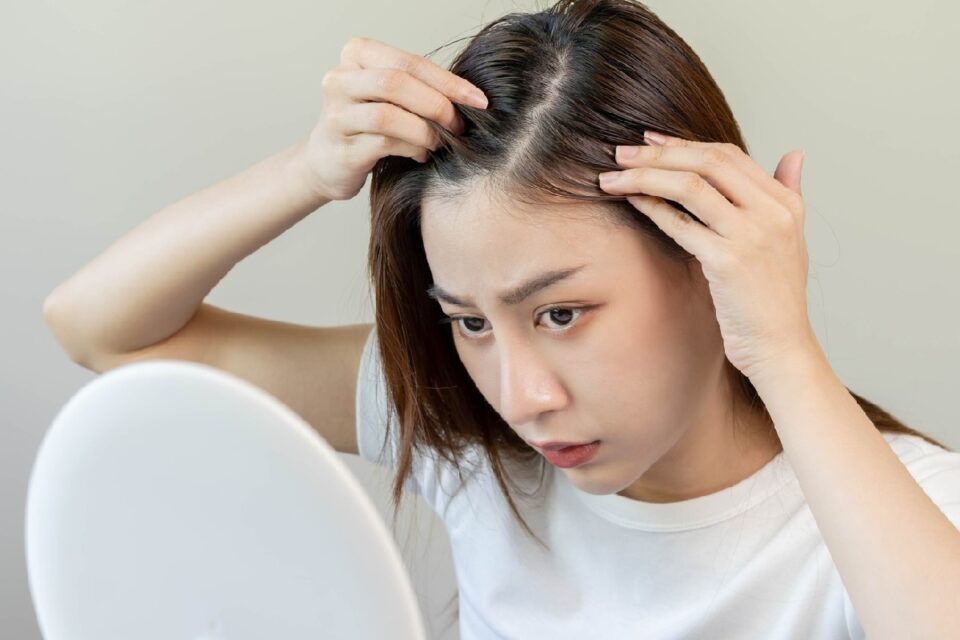Hair loss is a surprisingly common issue, affecting more than 80 million people in the United States. This breaks down to roughly 50 million men and 30 million women. Significant changes in hair volume can affect a person’s body image and self-esteem. Individuals who aren’t satisfied with their mane are in luck because there are now advanced treatments that stimulate hair follicles to grow thicker, stronger locks.
Table of Contents
What Causes Hair Loss?
A look back at old family photos could provide insight as to why you have male- or female-pattern baldness. If relatives also have receding hairlines and bald patches at the crown, it could be hereditary. Androgenetic alopecia affects up to 50% percent of individuals, but it can be managed medically.
A hair care routine and styling regimen could also be to blame. Although tight ponytails, corn rows, and braids flatter many different face shapes, the taut styles can tug on hair roots to the point that follicles are permanently damaged.
Hair loss could also be a symptom of an underlying medical condition, such as alopecia areata. This chronic condition causes the immune system to see hair follicles as a threat.
Being stressed out or experiencing hormonal changes can lead to extreme hair shedding, known as telogen effluvium.
How Is Hair Loss Treated?
Topical and Oral Options
There are different avenues you can explore to trigger hair growth. Approved by the FDA to tackle male androgenetic alopecia, finasteride is a key ingredient in the drug Propecia®. It works by inactivating the enzyme 5-alpha-reductase.
This enzyme synthesizes dihydrotestosterone (DHT), the male hormone that shrinks hair follicles to the point they no longer poke out of the scalp. Without 5-alpha-reductase, DHT levels drop. Taking the Propecia® pill can lead to hair growth within three months.
The anti-androgen medication spironolactone is used to treat female pattern hair loss. It reduces the body’s overproduction of testosterone and other male sex hormones that contribute to hair loss in women. It can take six months to a year to see results.
Minoxidil is an over-the-counter drug approved by the FDA for both men and women. You most likely know it by the brand name Rogaine®. Applied in liquid or foam form, the medication interacts with the scalp enzyme sulfotransferase, which converts the drug into minoxidil sulfate. The salt shortens hair growth’s resting stage, so hair enters the growing stage faster. It can take up to six months before you see noticeable results.
Invasive and Non-Invasive Procedures
Follicular unit transplantation is a minimally invasive outpatient procedure. A narrow strip of scalp with hair growth is surgically removed and separated into numerous small grafts. Tiny slits are placed in areas of the scalp where hair won’t grow. The grafts are then planted in the slits to prompt natural hair growth, with visible results in six to nine months.
Follicular unit extraction takes a different approach to graft harvesting. Hairs are extracted individually and then re-inserted in bald areas, and regrowth typically occurs in three to four months.
Plasma hair restoration relies on the platelet-rich plasma (PRP) in your blood that aids cell reproduction. After blood is drawn, it’s put in a centrifuge to separate the nutrient-packed plasma. The plasma is then injected into the numbed scalp. The growth factors in the plasma prompt hair follicles to start the growth cycle. The initial process is completed in a few sessions, with touch-ups required after that. You’ll start seeing results within three to six months.
Don’t Let Hair Loss Affect Your Life
Hair loss can occur due to age and significant hormone changes—and it doesn’t have to affect your sense of self. Understanding the cause of your hair loss is the first step to identifying the right treatment. Consult a medical provider to get a complete picture of your hair health and treatment options to enjoy fuller, thicker hair.


